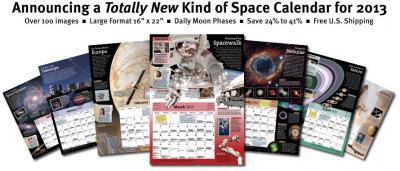What’s the Best Telescope for a Public Star Party?
Bill Pellerin
Houston Astronomical Society
GuideStar Editor
If you get into a discussion about the ‘best’ telescope, prepare for controversy. The right answer, of course, is that there is no one best telescope. There are telescopes that are better for the kind of observing you are doing (deep sky, planetary, double star, etc.), but how about the right telescope for the observing conditions you’re likely to find.
Here’s my story. On October 12, 2012 I was part of a group of amateur astronomer volunteers who did a star party at the Camp for All site near Brenham, TX, about 80 miles northwest of Houston. Camp for All is designed to provide a summer camp experience for children and their families with special needs. For this event we were showing the sky to children who are cancer patients. All public star parties are a great experience, but this one is especially rewarding for the volunteers.
The weather conditions for that day were not the best, but there were some breaks in the clouds and we had hope that the sky would clear in time for observing, which was scheduled between 8:00 p.m. and 9:00 p.m. The sky didn’t cooperate – clouds came and went and while a few stars popped out from behind the clouds from time to time, there was no consistent clear sky for us.
Knowing that these were the conditions we would likely have to work with, what’s the best telescope / mount to bring? Last year, when conditions were excellent I had my computerized alt-az 8” SCT at the site. Turn it on, find two stars to set it up, and it’ll find whatever I want in the sky and track it. I didn’t have to keep nudging the telescope to keep the object in view.
This telescope was a great choice last year, but it was a poor choice for this year. It didn’t work well at all, and it wasn’t because anything malfunctioned, it was because observing conditions were different. We had a 50 to 75 percent cloudy sky at the site, with a few stars shining through (notably Vega). The SCT system requires a two star alignment, and on a clear night it’s easy to accomplish. On a night where clouds are coming and going, alignment is virtually impossible. The ‘scope slewed to the vicinity of Alpheratz, said ‘center Alpheratz’, Alpheratz went behind a cloud, and so on.
I never was able to get the telescope aligned. I was able to manually point the telescope to the double cluster and show this to a few campers, but it wasn’t visible for long. The double cluster went behind a cloud.
What would have been better under these circumstances is an alt-az mounted manually pointed telescope – a Dobsonian or some other manual mount. With that kind of telescope I could have pushed it to, say, Mizar, a nice triple star system. Or to Albireo, a lovely double star in Cygnus. (Ok… I could have manually pointed the SCT as well, but it doesn’t lend itself to manual pointing easily.) I would, of course, have had to nudge the manual telescope from time to time.
So… what are the characteristics of a good telescope for these circumstances? The advantage to a computerized and motorized telescope is that it finds objects for you and it tracks them for you. Less fiddling is required during the observing session. This works if the sky is clear enough for you to get a good alignment. The advantage of a manually pointed telescope is that you can point it anywhere, easily, by hand and no alignment is necessary.
My conclusion: The best public star party telescope, especially if observing conditions are iffy, is one which can be manually pointed if necessary but has some pointing assistance capability if the sky allows you to do an alignment. I have an alt-az telescope mount with encoders and a small (deck of cards sized) push-to computer. If I can do a two star alignment, the push-to computer will tell me which direction and how far I have to push the telescope to get the telescope pointed to an object in its database. If I can’t do a two star alignment I can simply push it to some object I already know. I use a small wide field refractor with a on this mount so that the number of telescope nudges is limited and the distance I have to move the telescope is limited. This setup obliges me to select objects that show well in such an instrument, but there are plenty of those. Look in books and magazines for ‘binocular objects’ – these make great wide-field instrument objects.
I could have showed the kids some bright double stars (where the clouds cooperated), perhaps the Andromeda Galaxy, a bright cluster, or a planet (had there been any in the sky on that night).
The key to public star parties is to show the public some bright objects, have a story to tell about the object (how far, what color, the evolution of the object, etc.), and wait for questions. Be prepared to show where objects are in the sky with your green laser pointer and teach the observers about the object.





